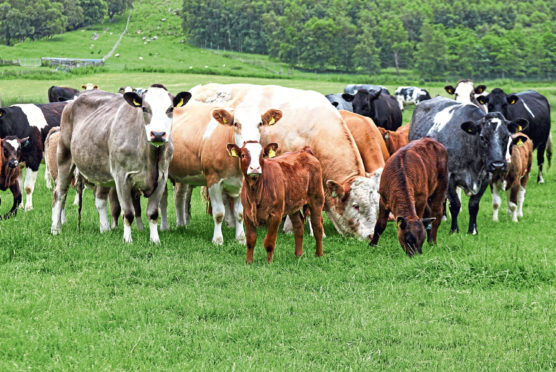Half of Scotland’s beef cows are located on just 15% of the country’s suckler herds, according to research.
The study, conducted by Scotland’s Rural College on behalf of the Scottish Government, highlights the uneven distribution of beef production across Scotland.
It found only 15% of suckler herds have 100 cows or more, collectively accounting for half the national herd, while 39% of herds have fewer than 20 cows and account for 6% of the national herd.
The research looked at a range of data including on-farm mortality, calving intervals, calf registration rates, heifer calving ages and finishing ages.
It found a wide variation in performance between farms and also between years.
The study’s authors say the research shows that any future policy interventions that require high volumes of cattle – such as drives to improve calving rates or reduce age at slaughter – can be targeted at a relatively small number of businesses but still impact the majority of cattle.
“Balancing emission reductions with other policy objectives, including food production and biodiversity enhancement, will be challenging but analysis such as this helps to inform debates about how it can be achieved,” said Andrew Moxey from Pareto Consulting, who co-authored the study.
